20 Amazing Animals in the Tundra (Facts & Photos) – Outforia
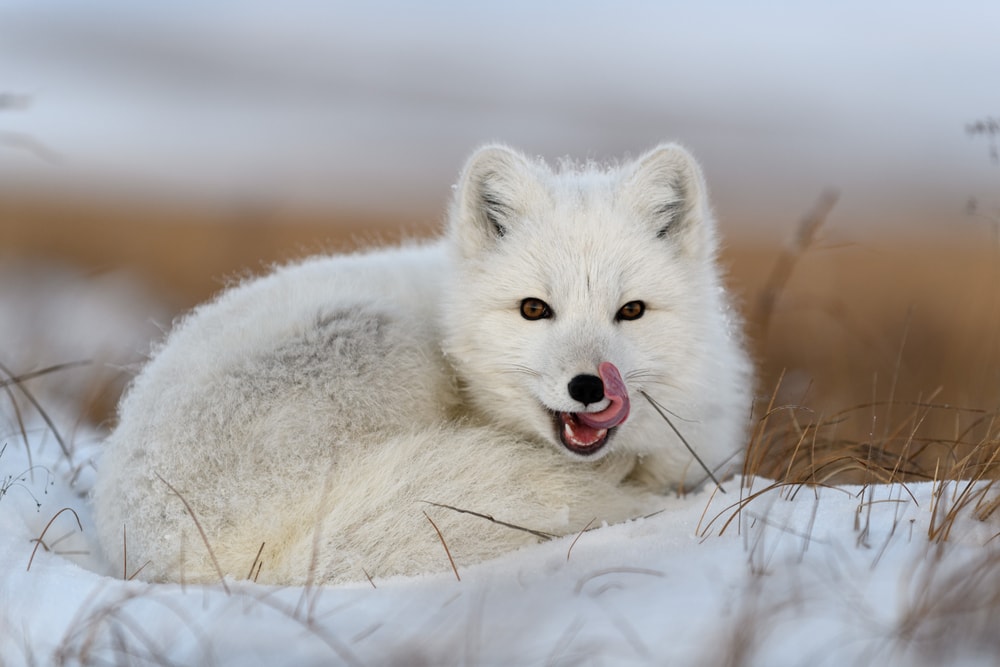
The tundra is home to extraordinary life that is able to withstand the harsh, below zero temperatures of the wintery biome. Animals that live in the tundra have unique adaptations that help them survive.
Although there are not nearly as many animal species in the tundra biome as others, there is still an abundance of life that thrives in the frigid environment. In this article, we’ll discuss the different animal species that are able to make do with the tundra conditions.
Mục Lục
What is a Tundra?
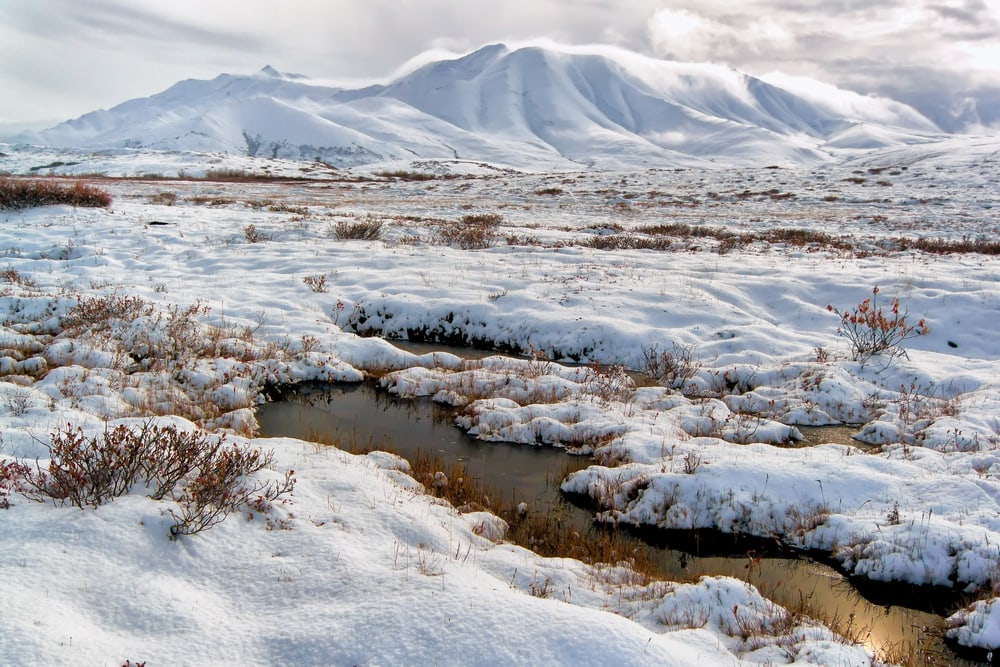
The tundra is the coldest biome and experiences harsh winter conditions with temperatures that drop below zero. During the summer, tundra biomes turn into boggy wetlands from melted ice and snow.
The tundra biome typically receives no more than 10 inches (25 cm) of precipitation per year, which means the tundra is also considered a desert. Tundra soil is permafrost, which is a layer of frozen ground underneath the land that prevents plant and tree growth.
Permafrost is caused by long-term below freezing temperatures that do not rise long enough for the underlying ground to thaw. Low-lying grasses and plants are able to grow in the tundra due to adaptations that allow them to sprout quickly in the short summer months and provide a source of food for many animal species.
3 Types of Tundra Biomes
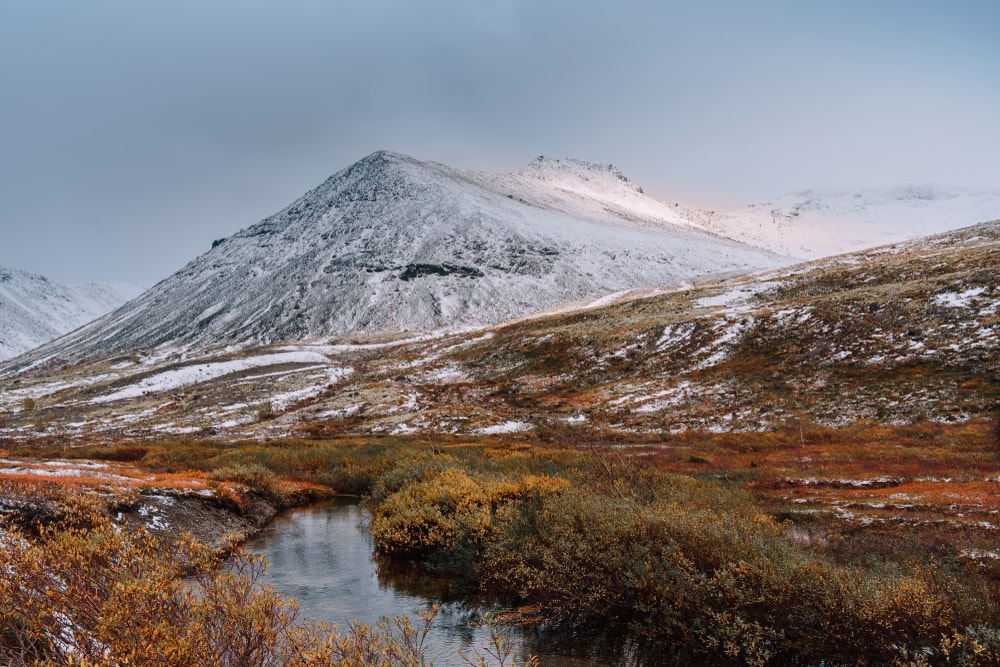
There are three types of tundra biomes.
- Arctic tundra
- Alpine tundra
- Antarctic tundra
1. Arctic Tundra
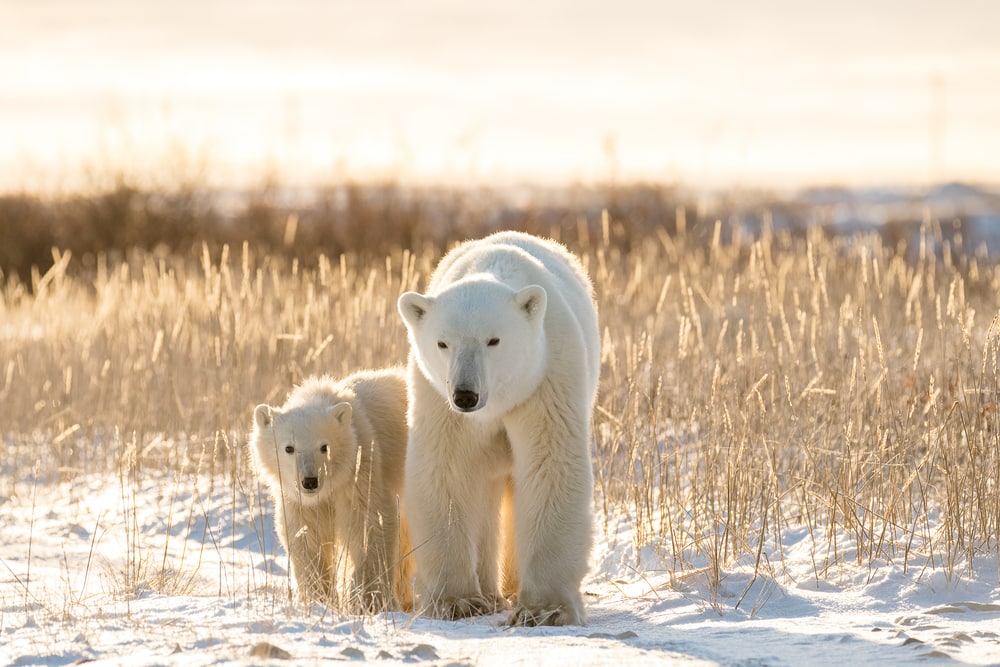
The Arctic tundra is located above the Arctic Circle in the northernmost part of the Earth. There are eight countries that have land within the Arctic Circle, including:
- Canada
- United States
- Greenland
- Iceland
- Norway
- Sweden
- Finland
- Russia
Temperatures in the Arctic tundra can reach as low as -30 degrees Fahrenheit (-34 degrees Celsius). The tundra has a short growing season that only lasts around two months. Animals such as the Arctic fox, polar bears, Arctic wolves, lemmings, and Arctic bumblebees live in the Arctic tundra.
2. Alpine Tundra

The alpine tundra is fairly different from the Arctic tundra as the alpine tundra biome is located atop mountains at very high altitudes where temperatures drop dramatically. Smaller trees and other vegetation are more abundant in this biome.
Animal species, such as the Himalayan Tahr and Snow Leopard, have adapted to the below-freezing temperatures and rugged terrain of the mountains in the alpine tundra.
3. Antarctic Tundra
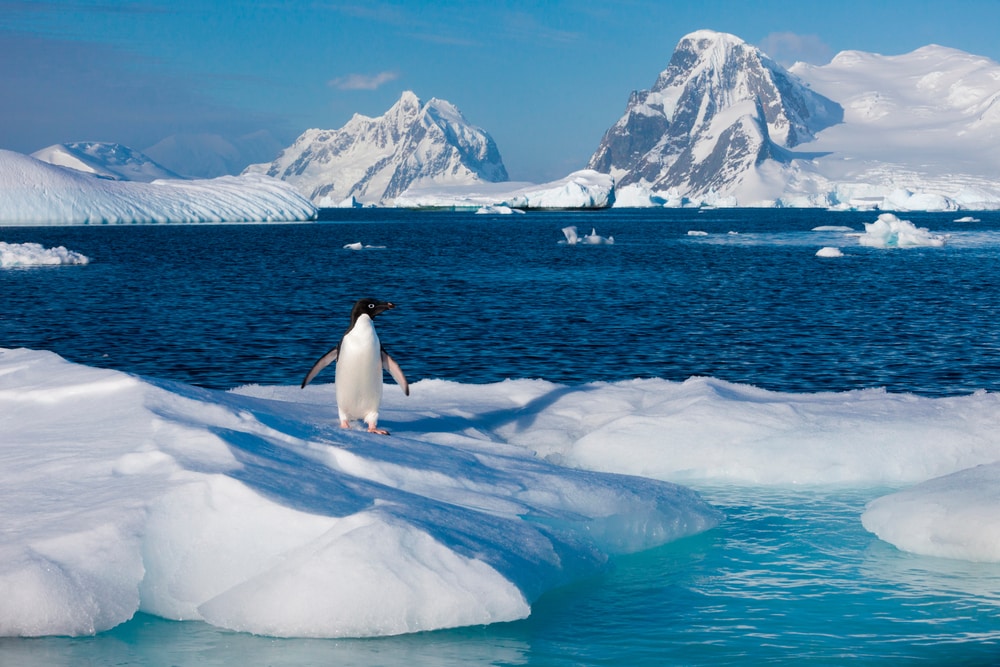
The continent of Antarctica and sub-Antarctic islands located between Antarctica and the coasts of Australia and New Zealand make up the Antarctic tundra. Although it is inhospitable to humans, scientists have set up research stations to study the area and wildlife.
Despite its uninhabitable characteristics, various species of penguins, seals, birds, whales, and fish live in the Antarctic biome. Much of Antarctic wildlife depends on sea life for food as there are only two plant species, Antarctic hair grass and Antarctic pearlwort, that inhabit the biome due to permanent ice and snow coverage.
You may also like: The 39 Animals You Can See on the Amazon Rainforest: Complete with Images, Facts, and More!
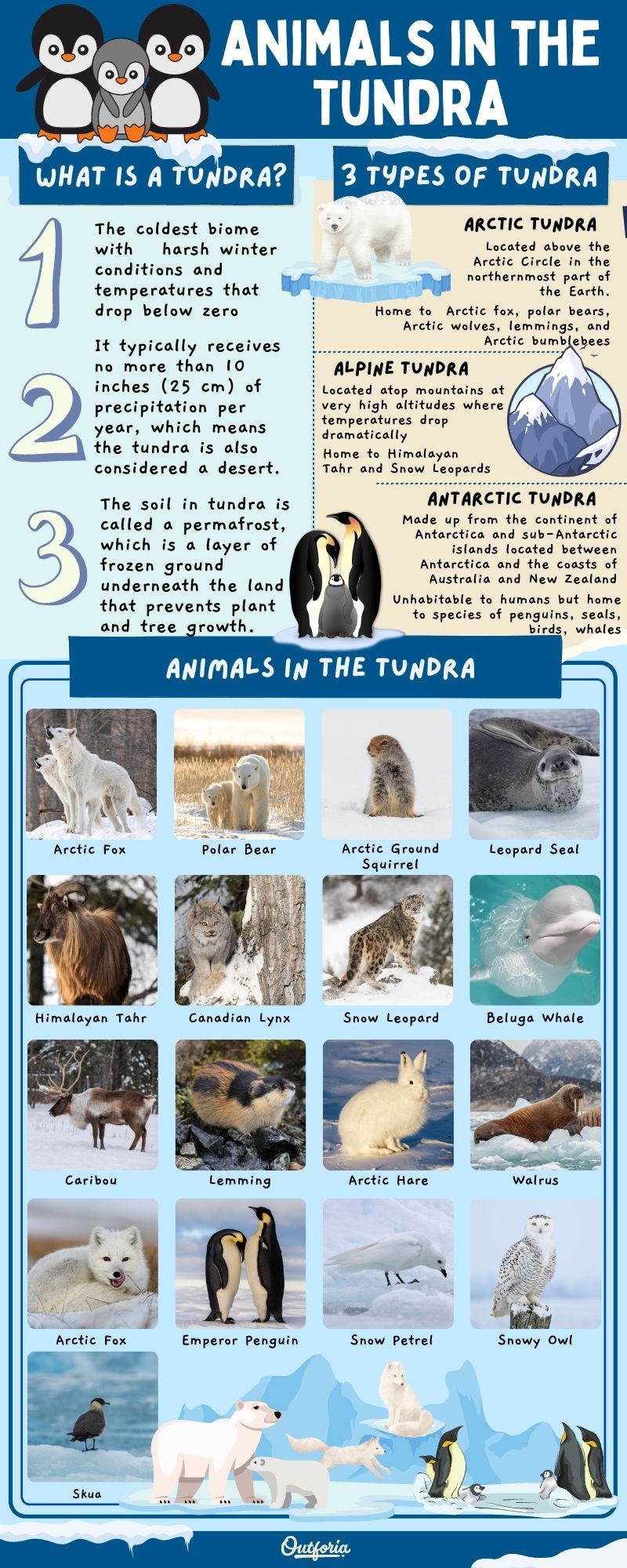
share this image on your site
<a href="https://outforia.com/animals-in-the-tundra/"><img style="width:100%;" src="https://outforia.com/wp-content/uploads/2022/03/animals-in-the-tundra-infographics.jpg"></a><br>animals in the tundra by <a href="https://outforia.com">Outforia</a>Mammals in the Tundra
1. Arctic Wolf (Canis lupus arctos)
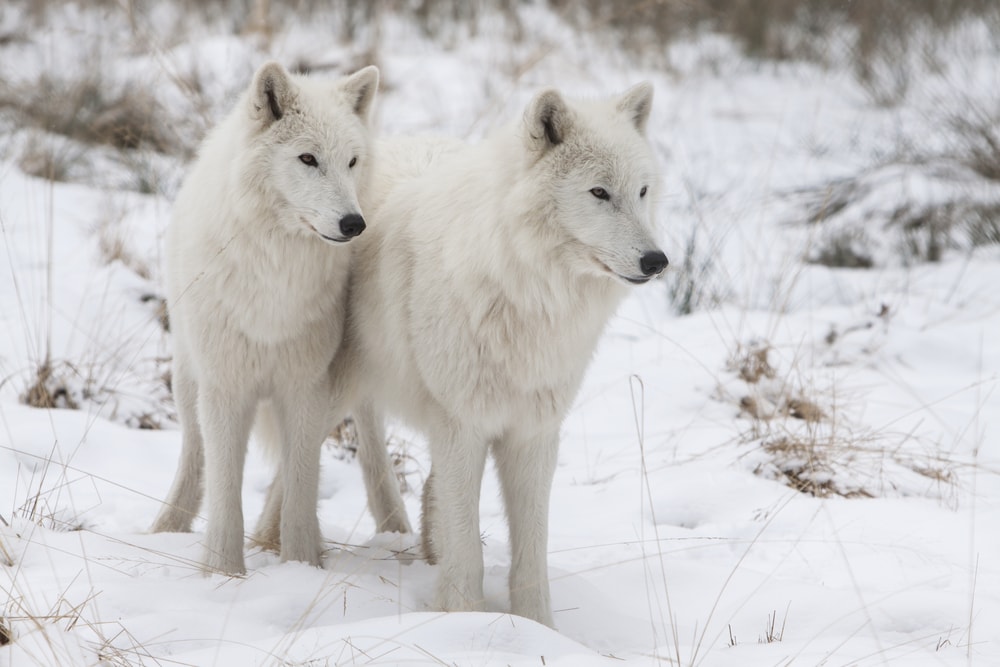


The majestic Arctic Wolf resides in the Arctic region of North America and Greenland. Older Arctic wolves are all-white in color with younger wolves having a smokey-gray and white coloration.
Arctic wolves tend to be smaller than gray wolves, but can weigh up to 175 pounds (79.4 kilograms). They tend to be solitary animals, but may also live in packs.
Since Arctic wolves cannot bury dens due to permafrost, they find caves, rock outcroppings, or depressions in the ground to give birth. Two to three pups can be born in one litter between the months of May and June.
The Arctic wolf hunts and eats mammals that vary widely in size. Much of their diet consists of Arctic hares, seals, lemmings, caribou, and sometimes they may even take down a moose.
2. Polar Bear (Ursus maritimus)
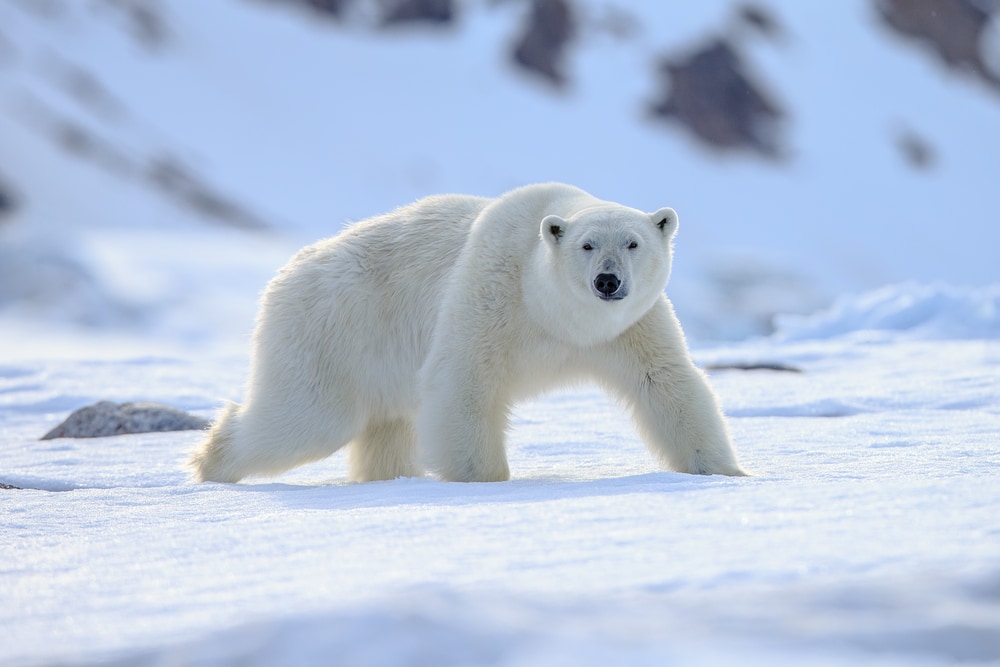
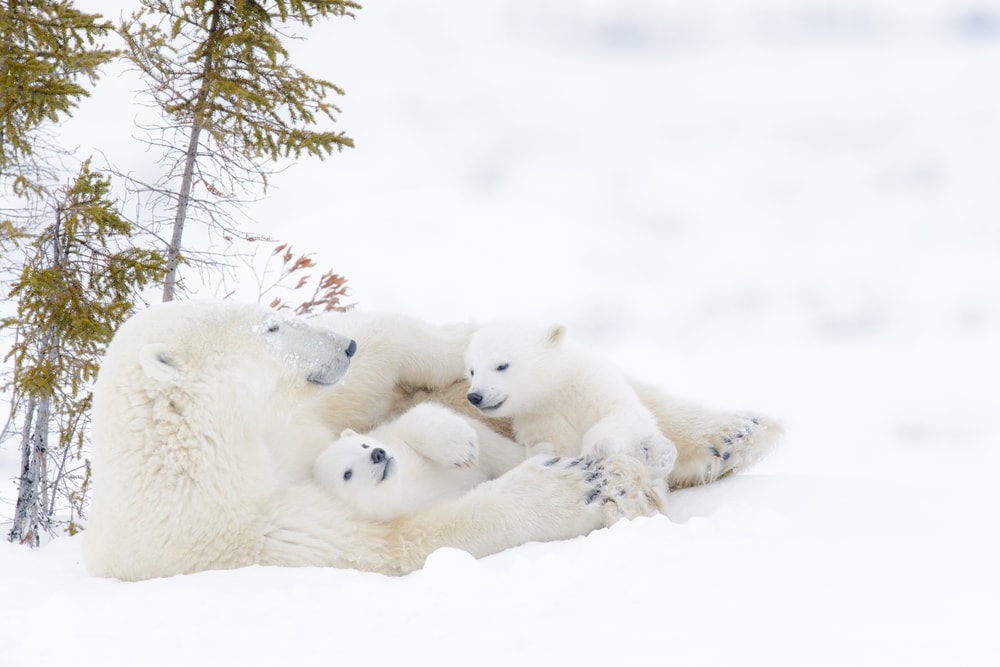

One of the most famous tundra animals is the Polar Bear. They inhabit the Arctic tundra in Alaska, Canada, Russia, and Greenland.
Polar bears have numerous adaptations that help them stay warm and camouflage in their snow-white environments. Their fur is white and hollow, which helps reflect sunlight, but underneath they have black skin.
Below their skin, they have a layer of fat that helps maintain their body heat. Their paws are wide and flat to help with walking on the snow and their toes have webbing which makes them an effective swimmer.
Polar bears hunt for seals that are near the surface of waters and look for seal dens to find seal pups for food. Unlike other bears, polar bears do not hibernate and females will only use dens when giving birth to keep the cubs warm.
According to the International Union for Conservation of Nature (IUCN) Their conservation status is vulnerable as of 2015. Their habitat is threatened by melting sea ice due to climate change on top of human activity such as oil and gas drilling.
3. Arctic Ground Squirrel (Spermophilus parryii)
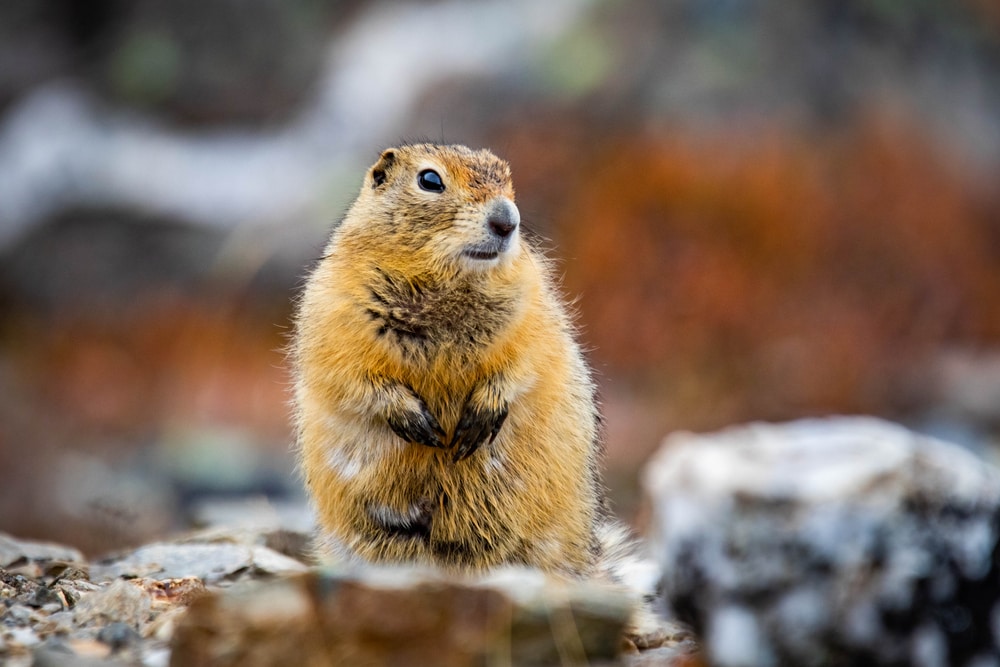
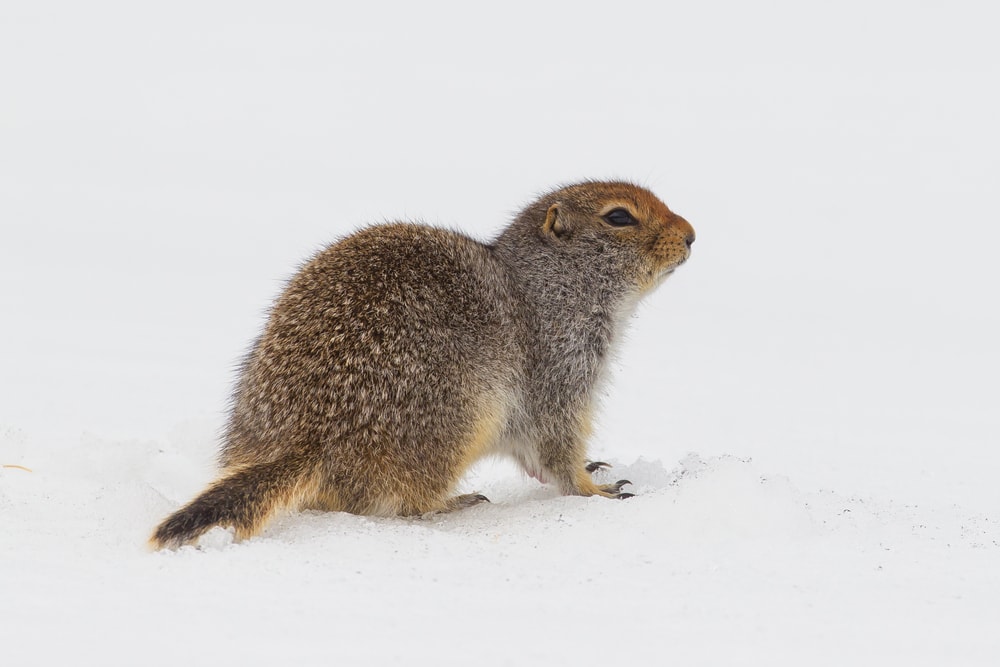
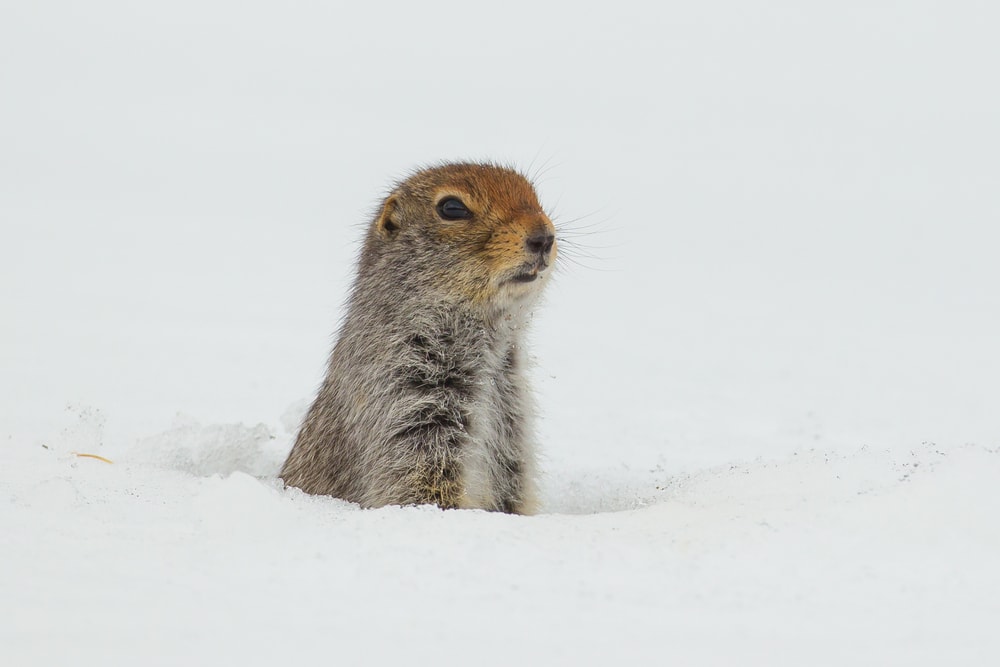
Unlike their other squirrel family members found frolicking amongst forests, the Arctic Ground Squirrel inhabits the alpine and Arctic tundra biomes and resides in burrows. They are found in Alaska, Canada, Siberia, and northern British Columbia.
Arctic ground squirrels dig burrows a few feet underground where they hide out in the winter months with their stored food from summer foraging. A colony can consist of hundreds of these critters.
They are herbivores and mainly feed on grasses, mushrooms, willow leaves, seeds, and berries found by meadows, lakeshores, and river and sandbank.
4. Leopard Seal (Hydrurga leptonyx)



The Leopard Seal lives in the Antarctic tundra. These seal species inhabit the pack-ice that is formed by freezing seawater and may also be found on sub-Antarctic islands. Their layer of fat, called blubber, helps them withstand the ice-cold Antarctic sea temperatures.
Leopard seals have slender bodies and long, sharp teeth that help them eat fish, penguins, squid, and crustaceans. They hunt by diving into the water to catch their prey. They are an apex predator of the Antarctic.
Female leopard seals go through a 9-month gestation period and generally give birth in November. Their conservation status is of least concern and their only known predator is the killer whale.
5. Himalayan Tahr (Hemitragus jemlahicus)

As their name states, the Himalayan Tahr is native to the high mountain tops of the Himalayas in Northern India to Bhutan. This makes the Himalayan Tahr a creature of the alpine tundra biome.
Their winter coat consists of darker brown to red-brown colors with a lighter underside and when temperatures rise in the summer they form a shorter coat that is light brown.
Baby Himalayan tahrs, called kids, are born between mid-April and mid-July following the breeding season, which occurs between October and January. Kids are able to walk in just three hours from birth.
Himalayan tahrs are herbivores and feed on various herbs and shrubs of the alpine land. They can live up to 14 years in the wild. Their main predator is the snow leopard. Himalayan tahrs are near threatened on the International Union for Conservation of Nature (IUCN) Red List due to urbanization, tourism, and hunting.
6. Canada Lynx (Lynx canadensis)
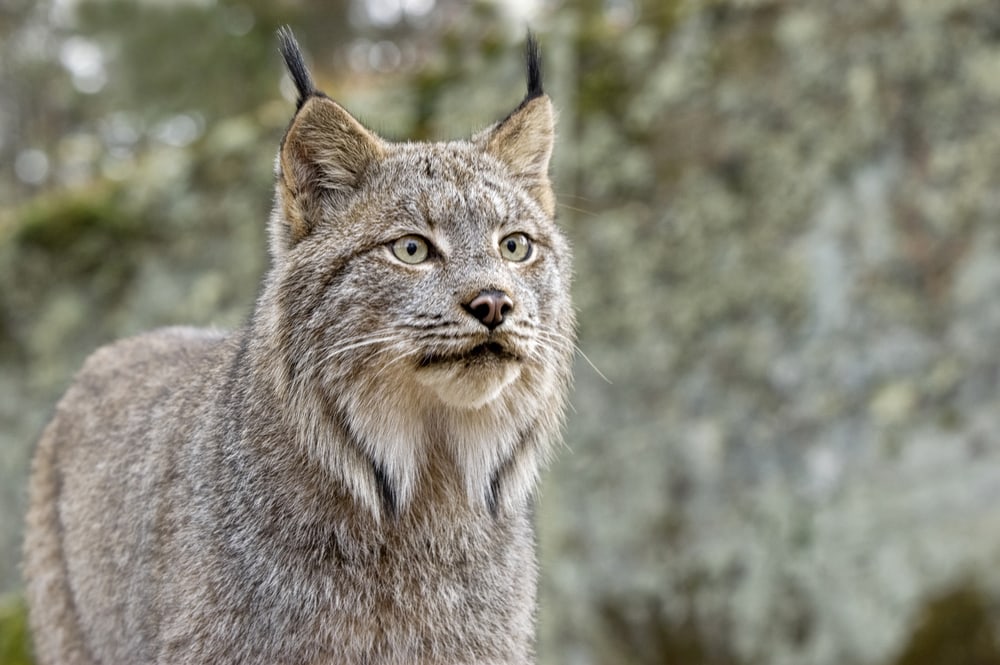
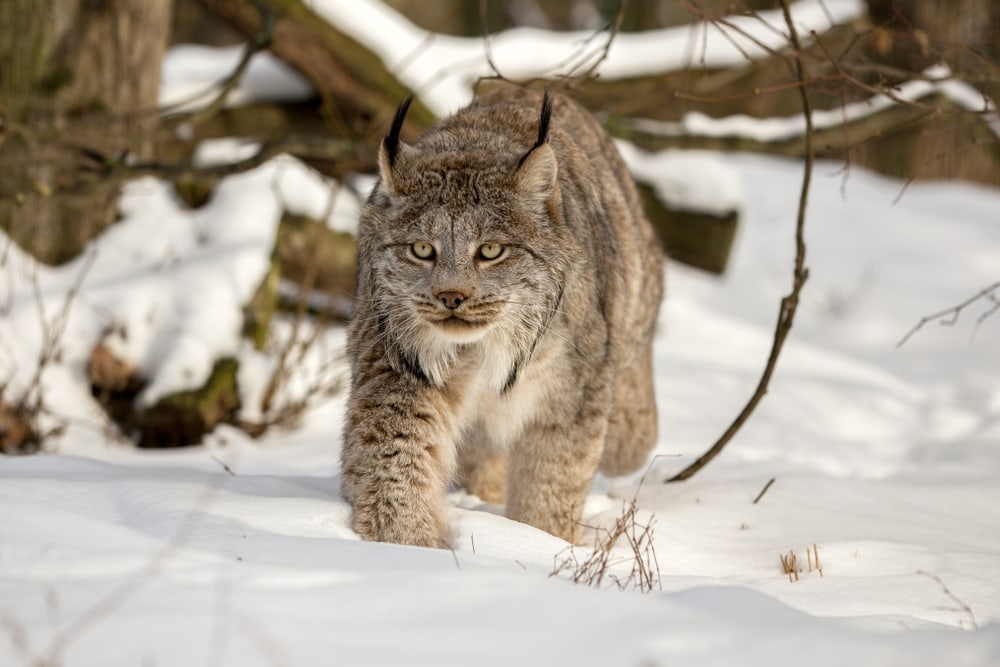
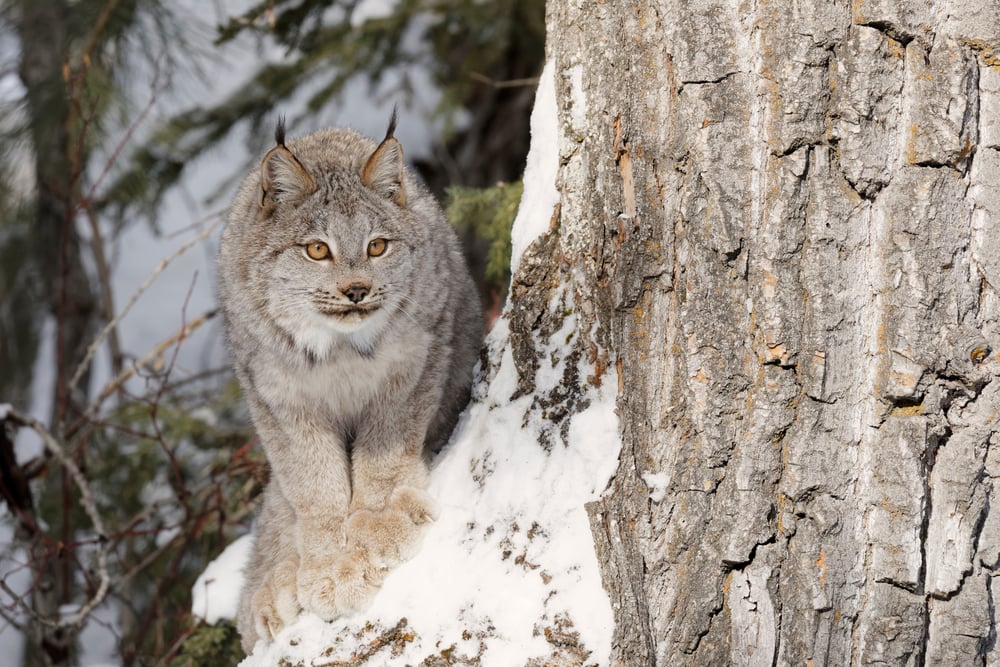
The Canada Lynx is a threatened species that live in the Arctic tundra. They can be spotted in Alaska, Canada, and northern U.S. states.
The fur that surrounds their ears helps keep them warm in cold, arctic temperatures and fur located under their paws allows them to walk in the snow without freezing.
Canada lynx have excellent night vision and are able to spot and hunt prey in the dark. Their diet consists mainly of the Snowshoe Hare, but if availability is scarce they turn to eating smaller mammals and grouse.
Their conservation status is currently of least concern according to the IUCN Red List, but their population is threatened by urbanization, hunting and trapping, and logging.
7. Snow Leopard (Panthera uncia)
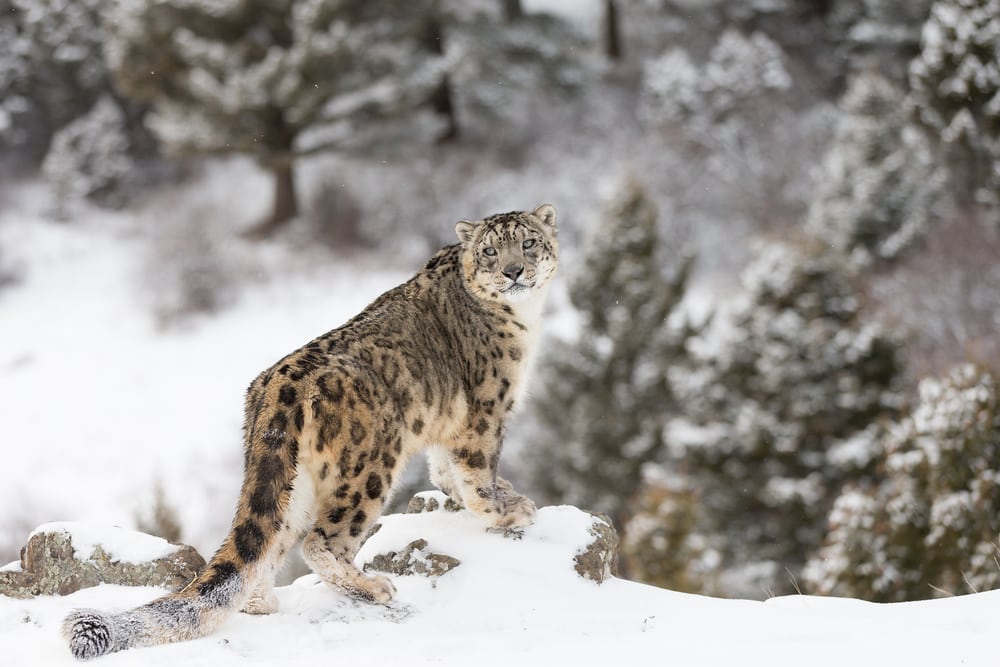
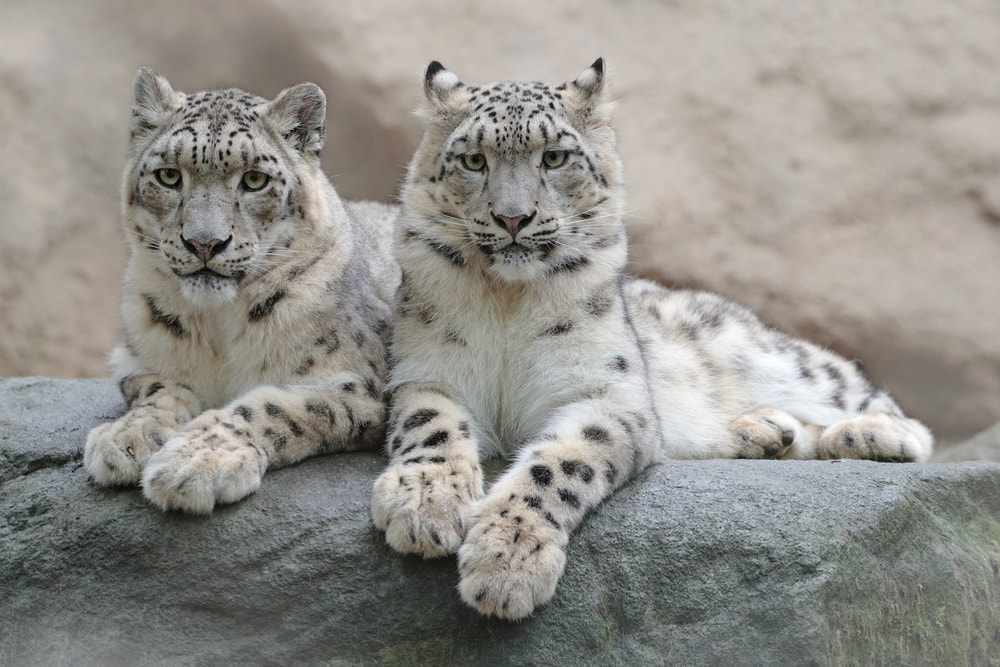
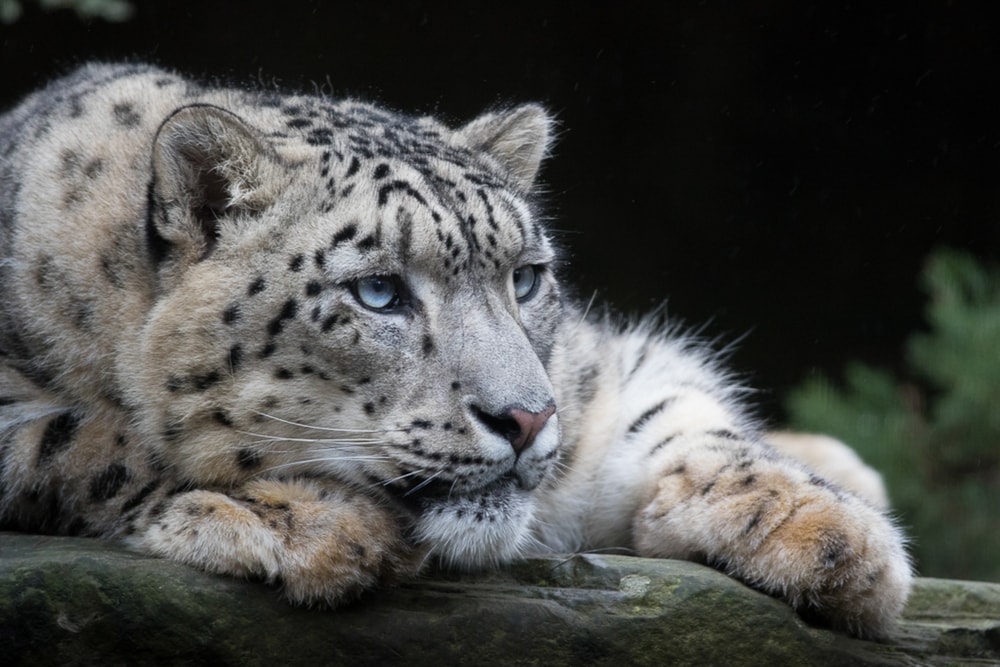
Snow leopards inhabit the high altitude terrain of the Himalayas, Siberian Mountains, and the Tibetan Plateau. They have a beautiful dark-spotted coat that is light tan to cream in color with long bushy tails that help keep them warm.
Their diet largely consists of other mammals, such as sheep, pikas, hares, and birds. Due to the rising temperatures from climate change, other predators that feed on the same prey are increasing competition amongst food sources.
The snow leopard is listed as a vulnerable species as of 2016 and their population is decreasing due to mining, tourism, urbanization, poaching, and climate change.
8. Beluga Whale (Delphinapterus leucas)
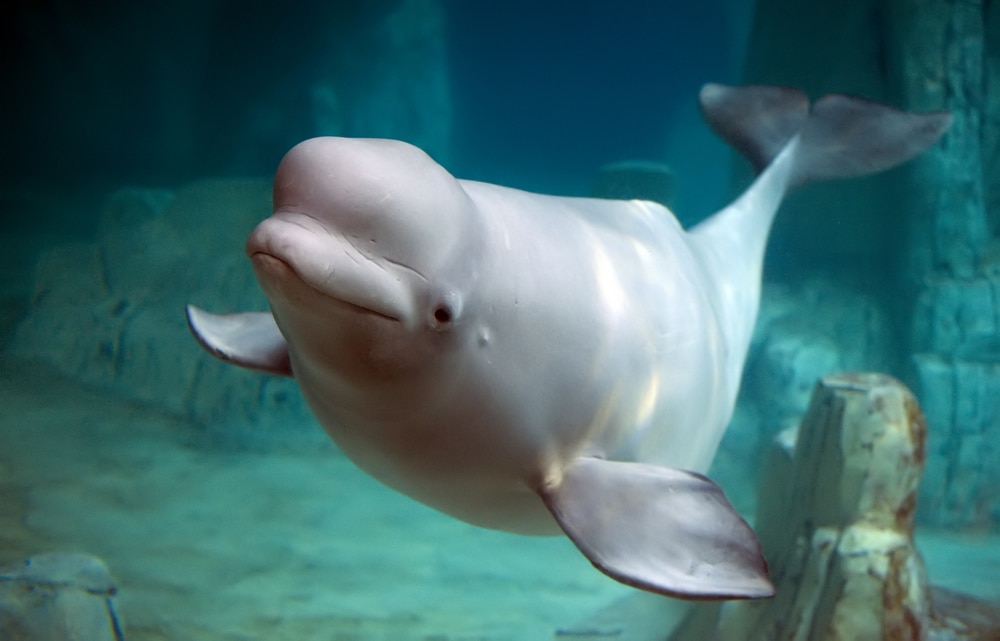
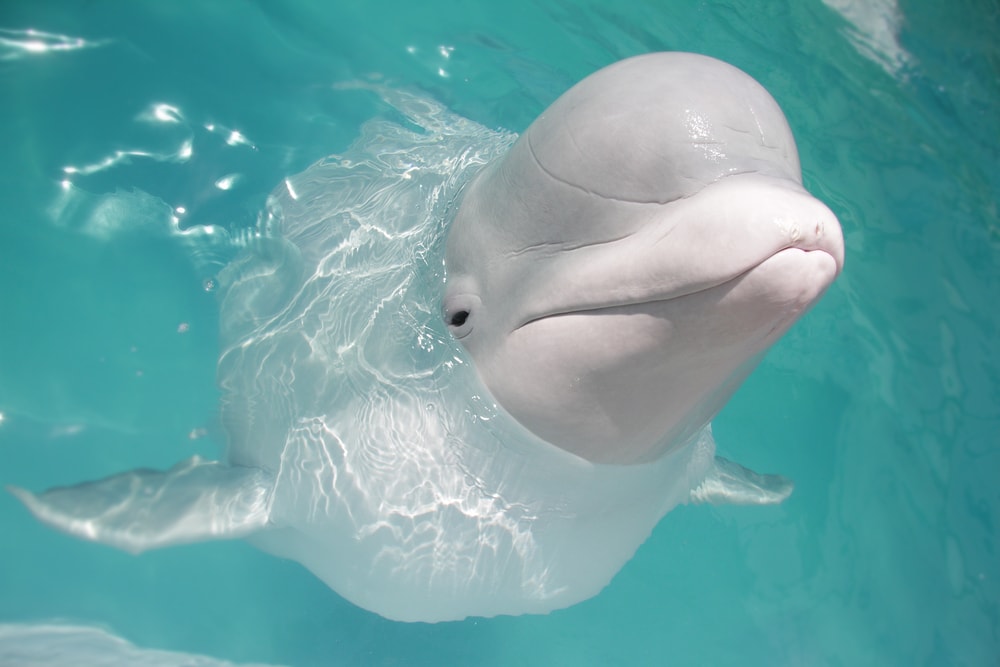
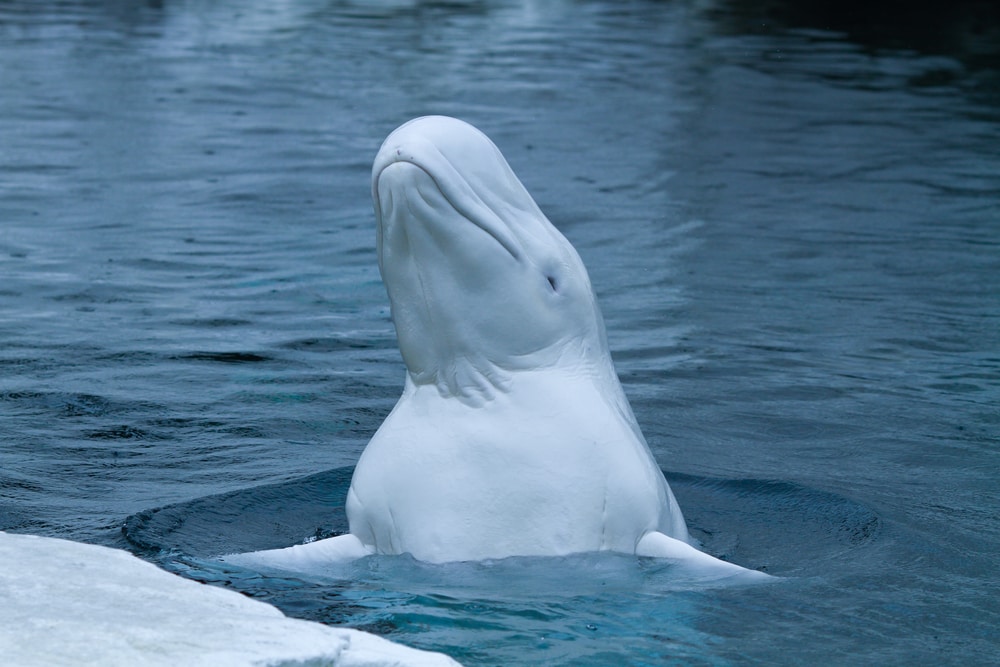
One of the sea creatures that travels throughout the Arctic is the Beluga Whale. They have a distinct look with their bulbous forehead and round white bodies. They are known as the “canary of the sea” as they make various sounds by clicking, chirping, and whistling.
Beluga whales feed on various sea life including salmon, shrimp, and mollusks. These whale species inhabit the Arctic sea until winter approaches and ice begins to form, causing them to migrate south in large groups called pods.
9. Caribou (Rangifer tarandus)
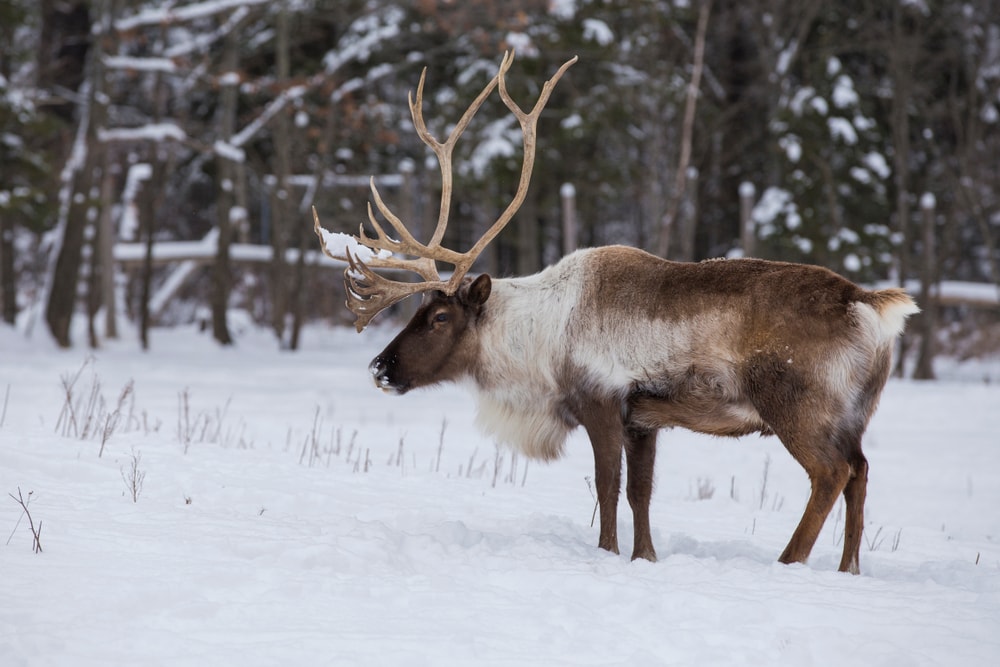
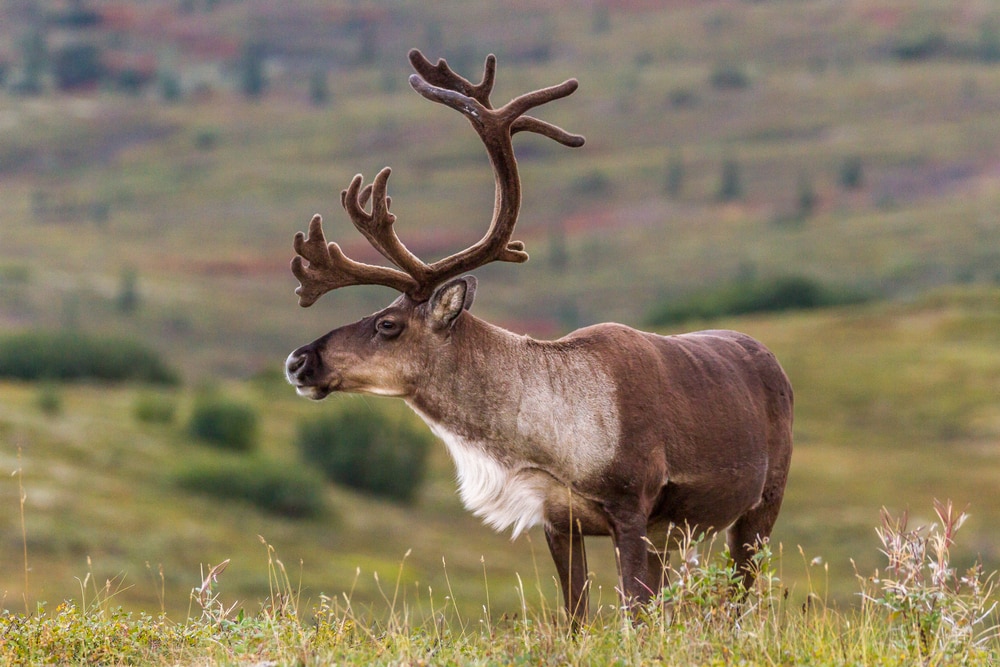
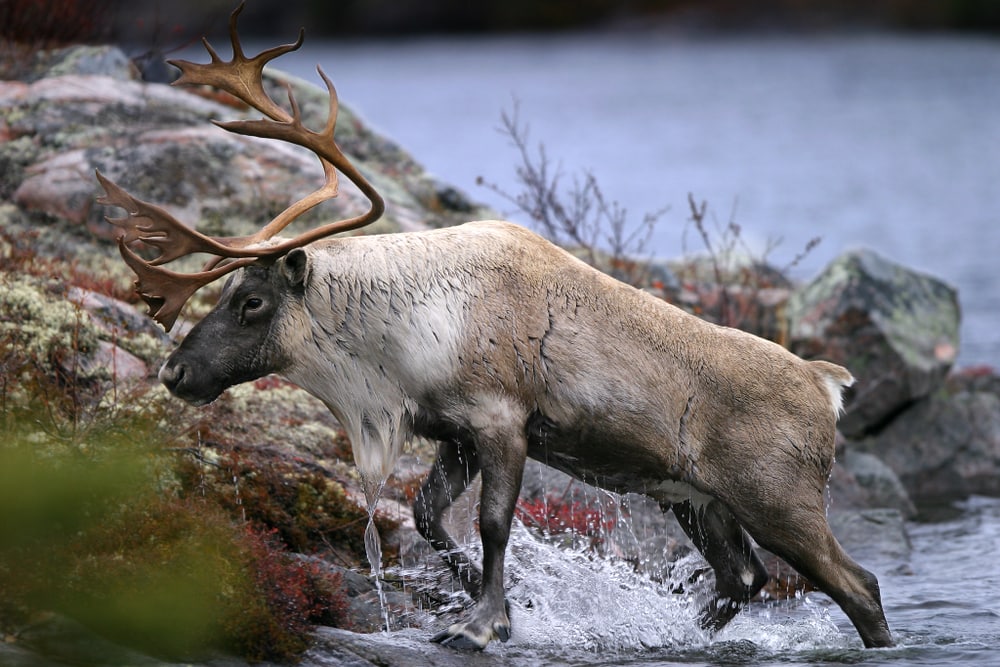
Known as Caribou in North America and reindeer in Asia and northern Europe, these creatures live in the tundra and taiga biome. They are nomadic and travel long distances in herds.
They have footpads that change with the seasons to accommodate for the soft, boggy grounds of tundra summers. The pads harden to help them trek through the snow and ice during winter.
Caribou are herbivores and feed mainly on grasses, willows, mushrooms, sedges, and lichens.
10. Lemming (Lemmus lemmus)
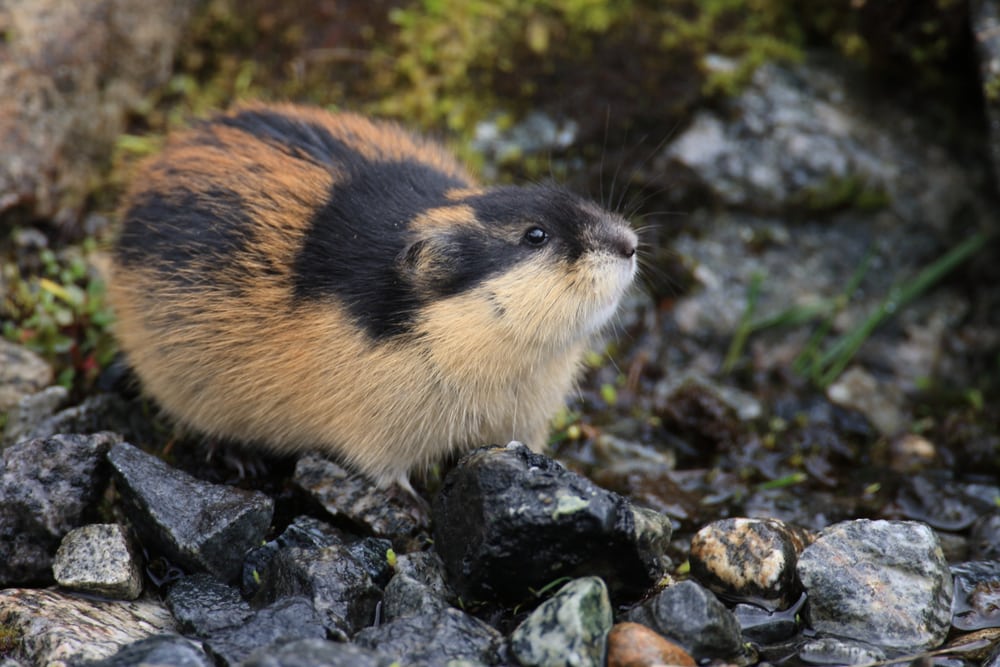
Lemmings are tiny rodents of the Arctic tundra. Various subspecies inhabit other biomes such as temperate forests, but the Norway Lemming, Lemmus lemmus, resides in the tundra and alpine region of Fennoscandia. This region includes Finland, the Scandinavian Peninsula, and a portion of Russia.
Although small in nature, they have a mighty impact on their ecosystem. Lemmings are at the lower end of the food chain and give predators, such as Arctic foxes, snowy owls, and Arctic wolves, a source of food year-round since Lemmings do not hibernate.
Their fur color changes with the seasons to help them hide from predators. In the summer, their fur is brown and in the winter it turns white. Lemmings live off of various seeds, plants, and berries throughout the year and tend to hide out in tunnels to keep warm once the cold season arrives.
11. Arctic Hare (Lepus arcticus)
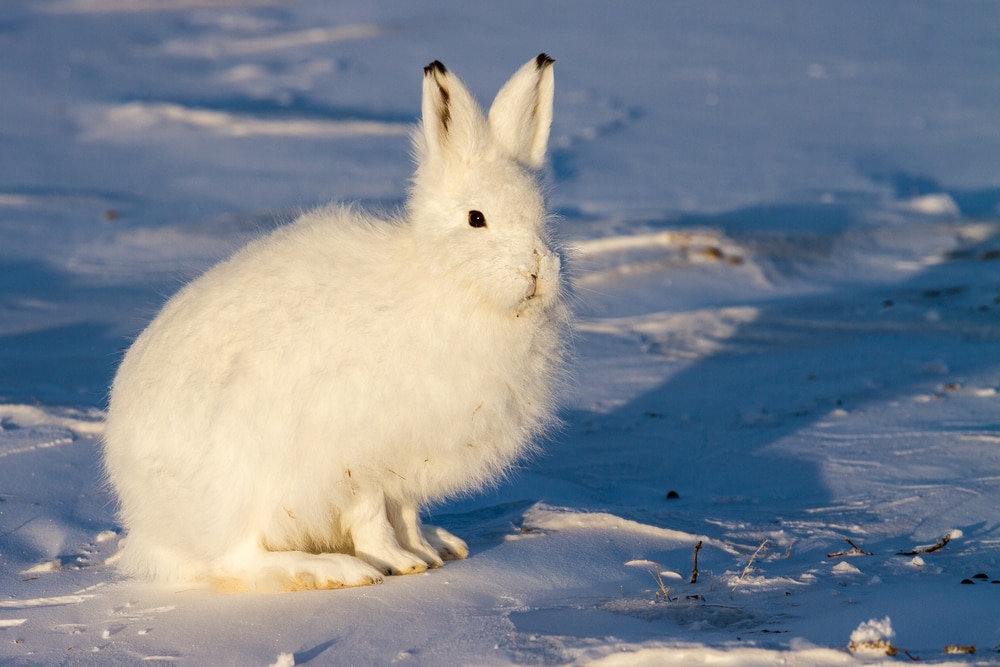
Arctic hares live in the Arctic tundra of northern Canada and can also be found on islands near the coast of Greenland. These speedy hares use their strong back legs to propel them up to 30 mph (48.2 kph) which helps them make great escapes from predators.
They have several adaptations to defend themselves from predators and conquer tundra conditions. Their front teeth differ from other hares as they are longer and not as curved so they can uproot plants in tight rock crevices.
 arctic hare shedding its winter coat
arctic hare shedding its winter coat
Their winter coat is white with black coloration on the tips of their ears and during the summer their coat turns grayish-brown. Arctic hares also have long claws that help them dig in snow.
The Arctic Hare diet consists of berries, sedges, willow roots and twigs, and mosses.
12. Walrus (Odobenus rosmarus)
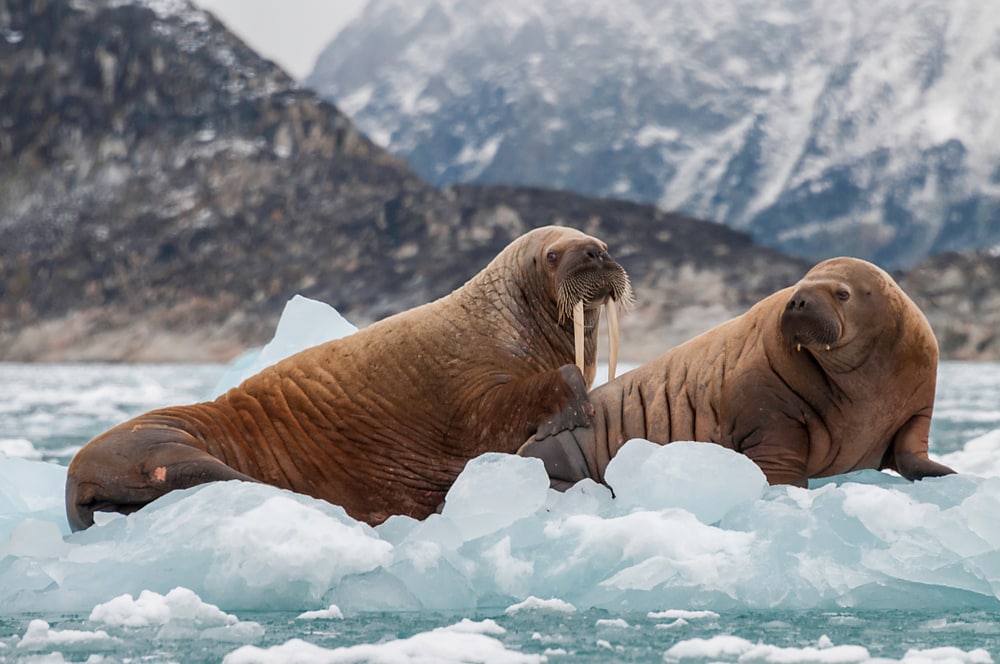
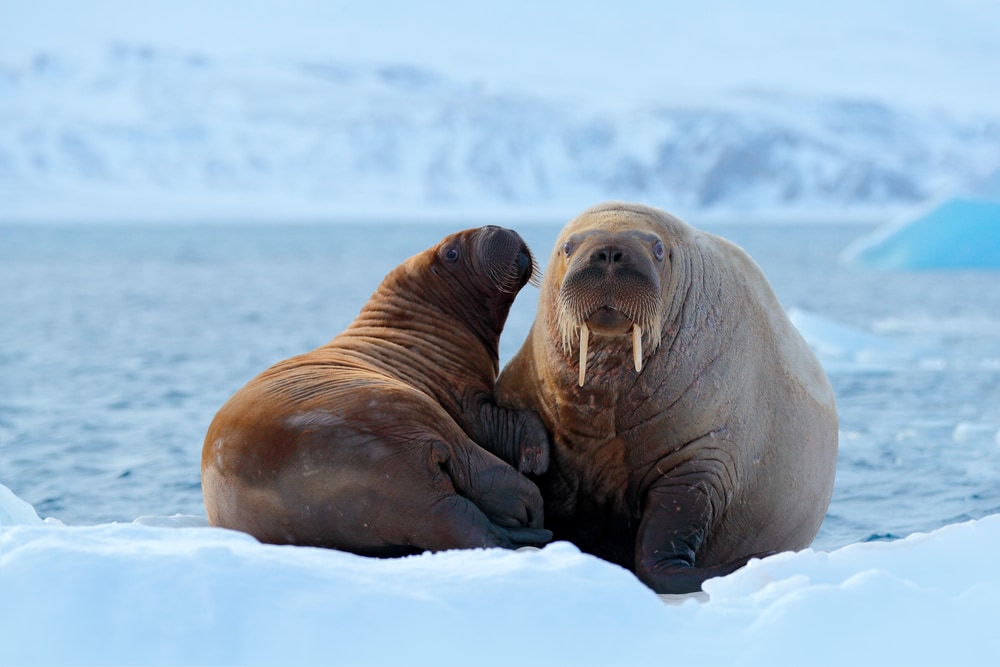

The Walrus has two subspecies, the Atlantic Walrus (Odobenus rosmarus rosmarus) and the Pacific Walrus (Odobenus rosmarus divergens). Both subspecies inhabit the Arctic and sub-Arctic tundra across the Northern Hemisphere. They lounge on sea ice and stick close to the coast.
They use their long tusks for many things including helping themselves up onto sea ice and opening breathing holes in the ice. Walruses have a lot of blubber to keep them warm when diving into frigid ice waters.
Their conservation status is vulnerable. Warming temperatures due to climate change is threatening their sea ice habitats.
13. Arctic Fox (Vulpes lagopus)
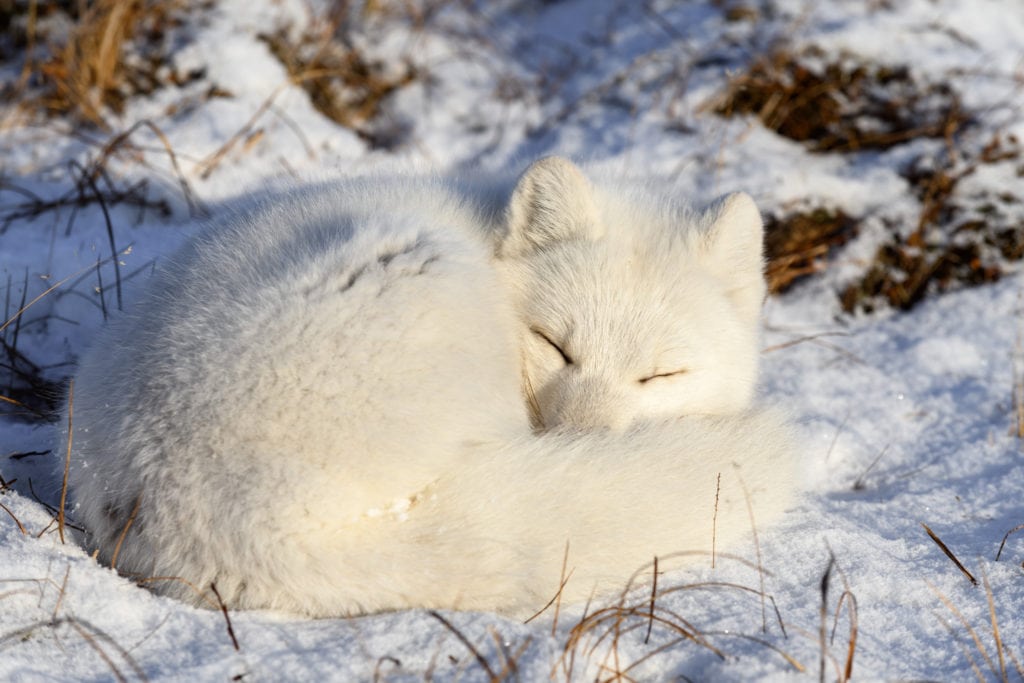

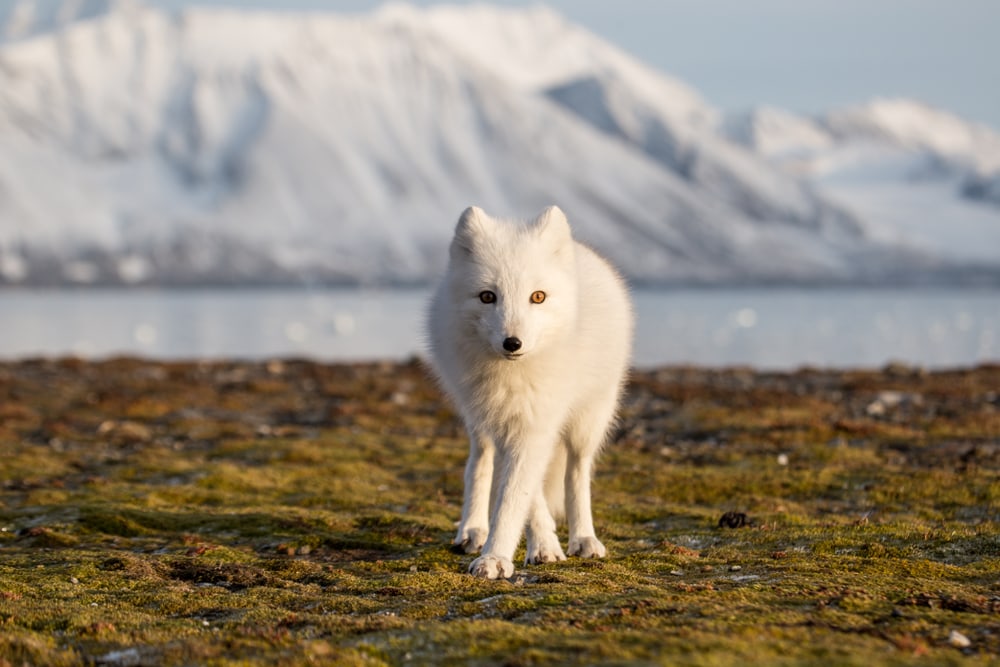
Last on the list for mammals in the tundra is the stealthy Arctic Fox. They live in the Arctic tundra all across the Northern Hemisphere stretching from Alaska and Canada to the coasts of Greenland and Russia.
Arctic foxes mainly inhabit the grasslands of the Arctic tundra and feed on rodents, fish, birds, and sometimes vegetation if preferred food is scarce. They are also scavengers and will eat leftover meals from other predators.
They have a white fur coat with gray coloration to blend in with their icy surroundings. They go through a molting process and shed their thick winter coat for the summer. Baby Arctic foxes are born with dark brown fur that lightens as they get older.
You may also like: Check out the 23 Amazing Different Types of Foxes and Where You Can Find Them: Complete with Images, Facts, and More!
Birds in the Tundra
14. Emperor Penguin (Aptenodytes forsteri)
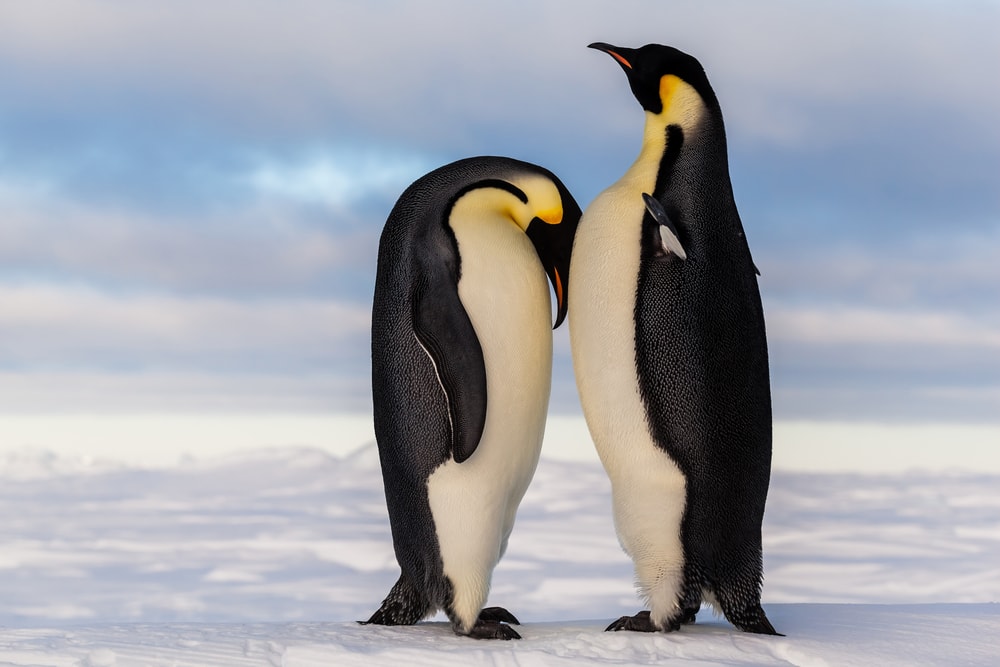
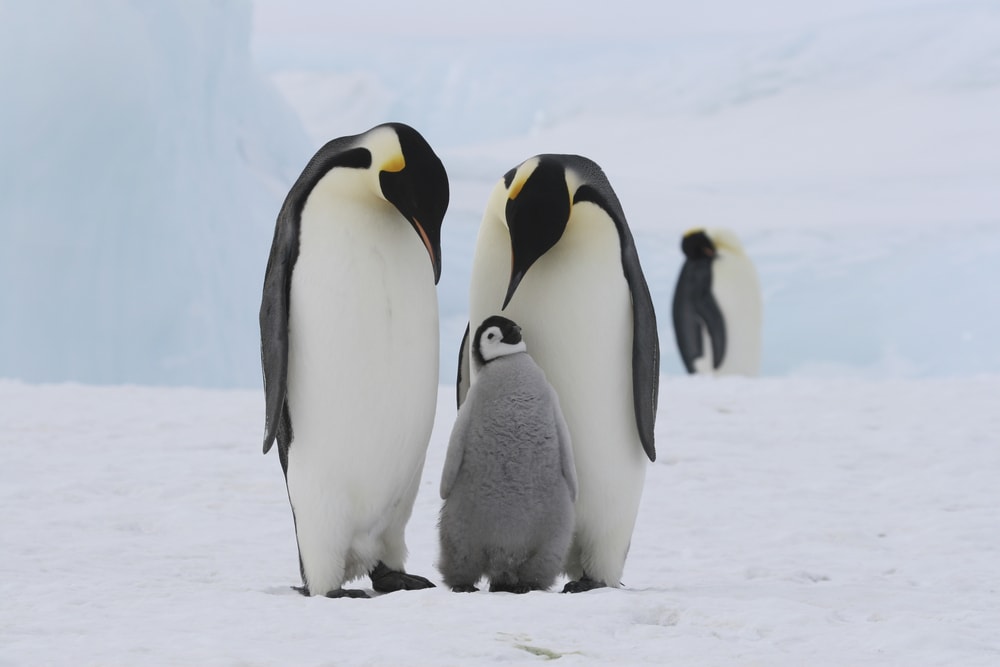
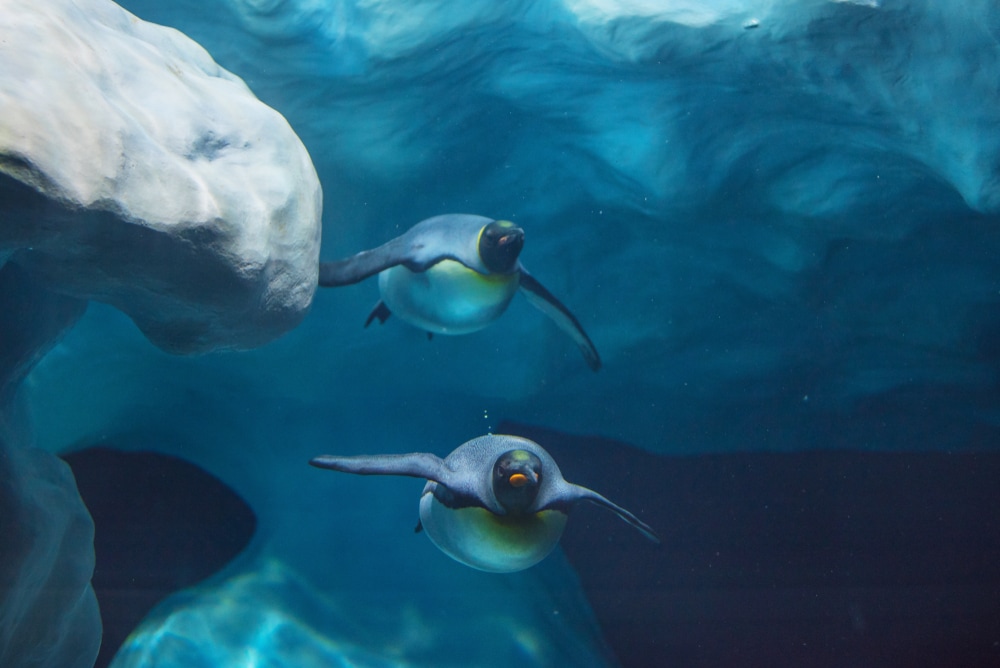
The elegant Emperor Penguin inhabits the Antarctic tundra. They are near threatened and their and their population is declining due to climate change melting the sea ice they travel on.
Emperor penguins are the tallest living penguin species and can stand at almost 4 ft (1.2 m) tall. They have large white breasts, golden yellow coloration on the sides of their head, and a black face, flippers, and back.
Unlike other birds, emperor penguins have special feathers that provide insulation. They also limit their activity in the winter and store body fat to keep them warm. These penguins stick together in colonies and huddle together to keep warm, especially males when incubating eggs during the winter.
15. Snow Petrel (Pagodroma nivea)
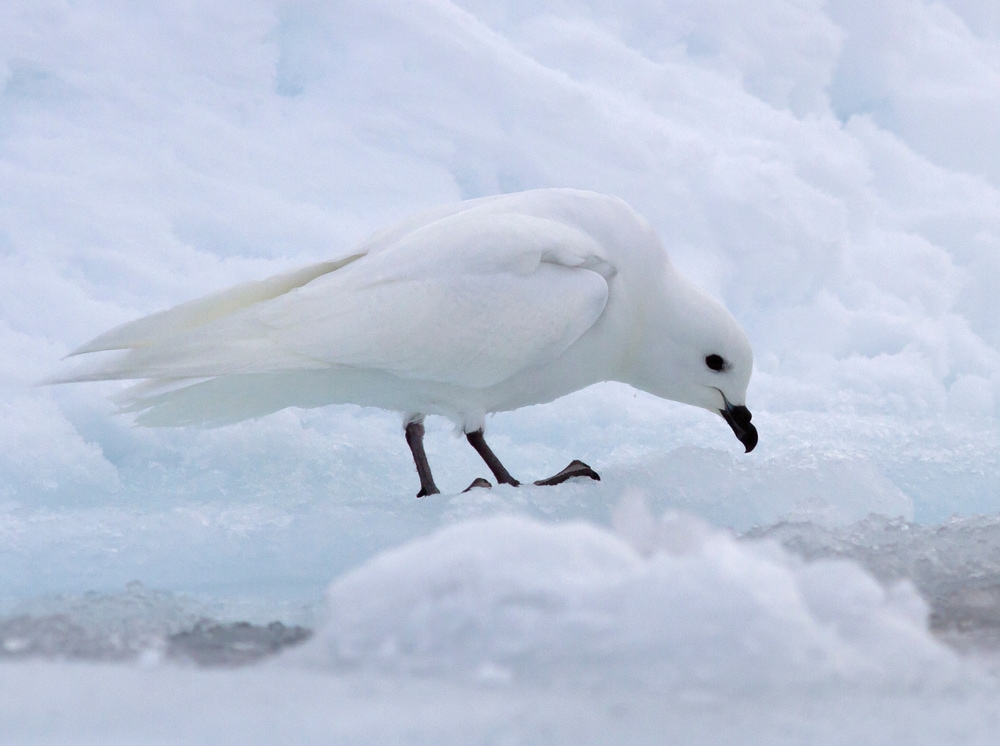
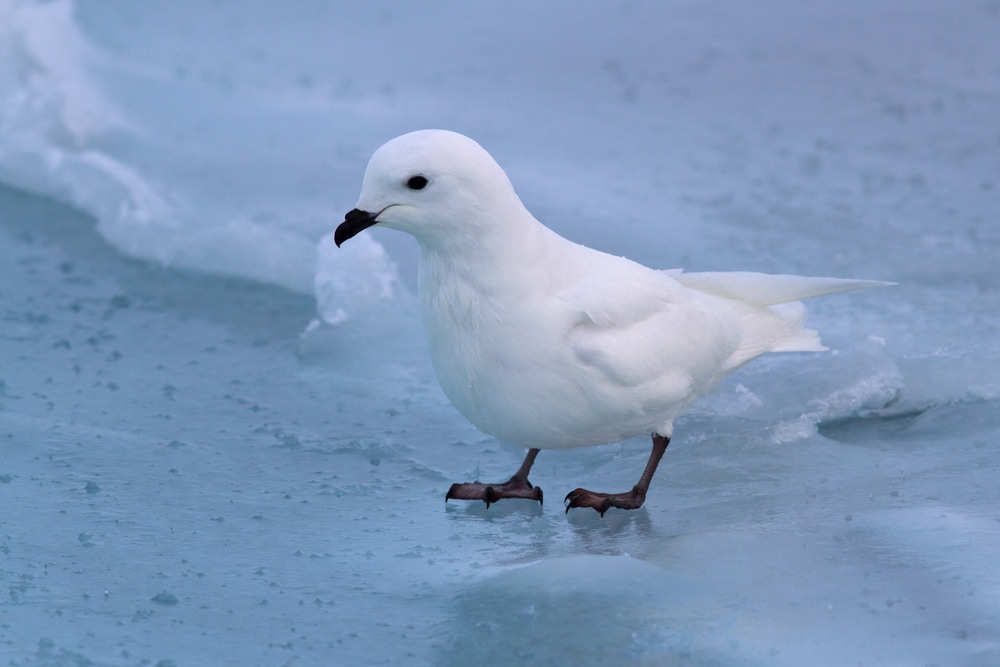

Snow petrels live in Antarctica and travel amongst the sub-Antarctic islands. They mainly reside close to the sea along cliffs where they build pebble-lined nests. Females lay only one egg at a time and tend to the baby chick for almost two months until it leaves the nest.
Much of their diet consists of sea life such as fish, small squid, mollusks, euphausiids, and sometimes leftover carcasses of seals and penguins.
16. Snowy Owl (Bubo scandiaca)
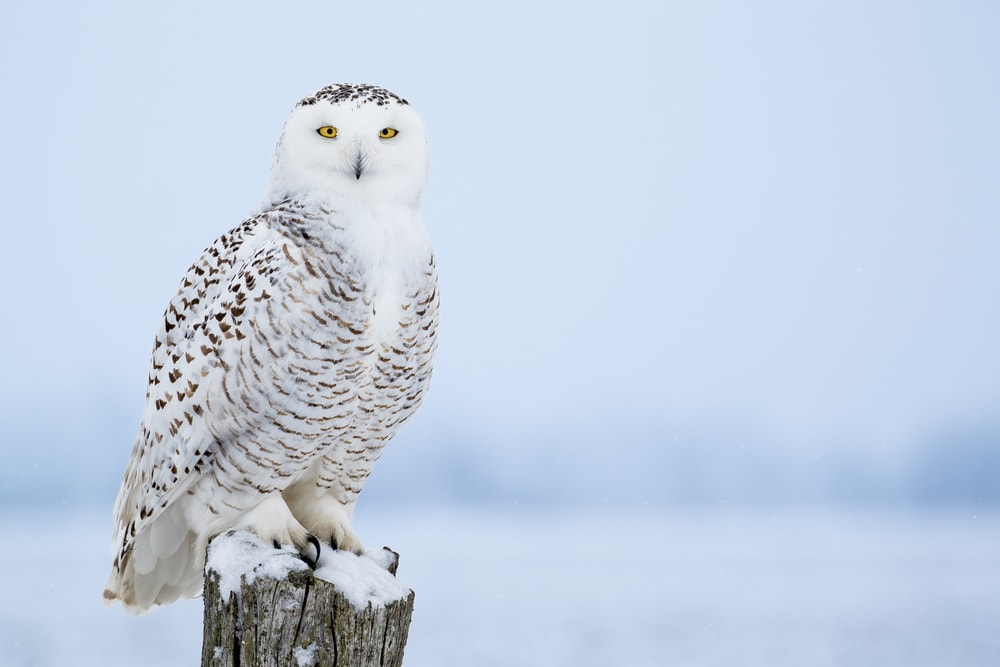
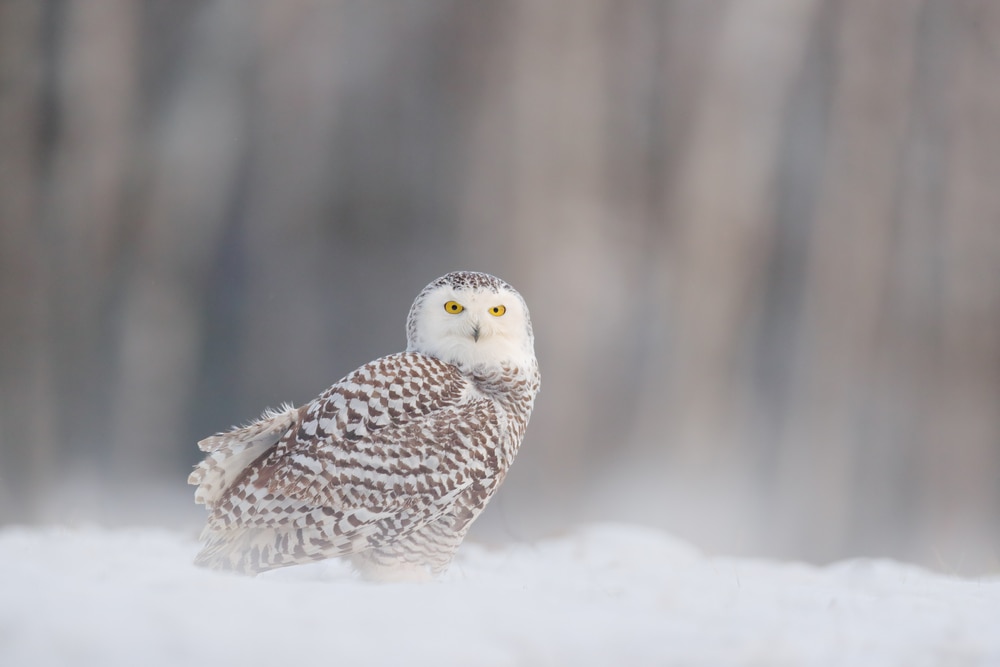
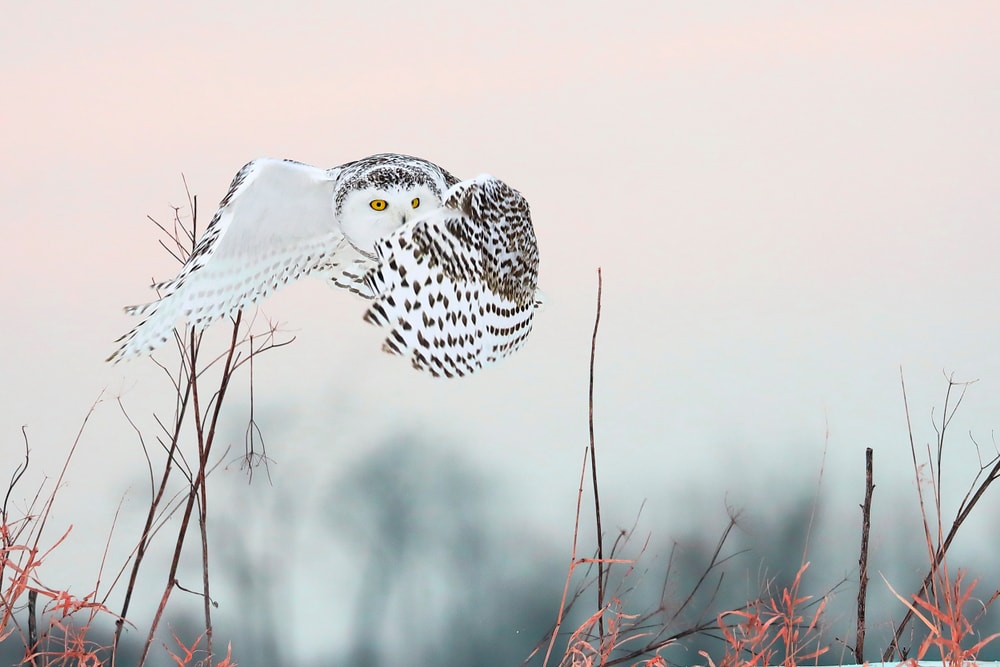
Next on the list is the Snowy Owl of the Arctic tundra. Although they turn all white with age, snowy owls are born dark grayish-brown and form a speckled-gray or brown and white coloration later on.
Snowy owls used to be of least concern, but due to their declining population threatened by human activity, they are now vulnerable as of 2021.
Like other owl species, these birds have great eyesight and wait until they spot their prey before they snatch it with their talons. Snowy owls’ favorite snack is the Lemming, but they also eat rabbits, fish, and other birds and rodents.
Snowy owls can brave the tundra year-round, but may migrate to marshes and fields in other regions.
17. Skua (Stercorarius parasiticus)
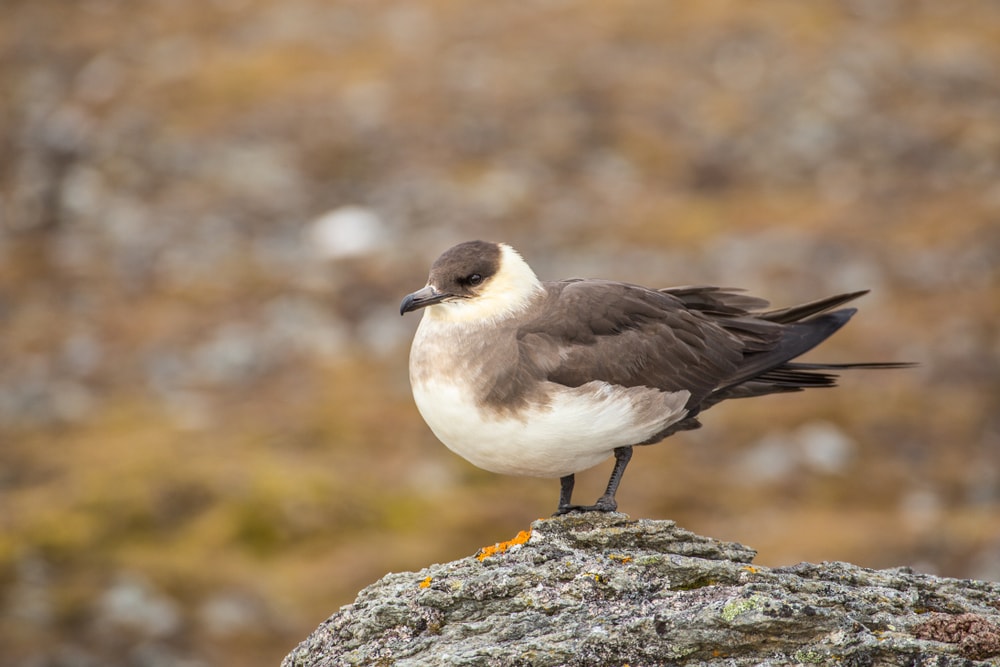
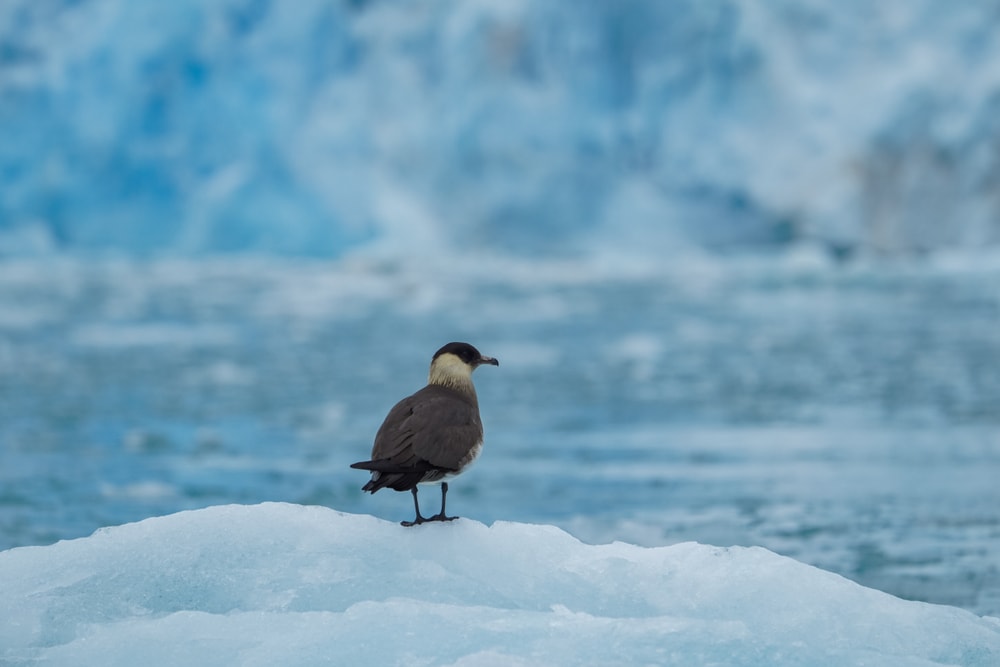
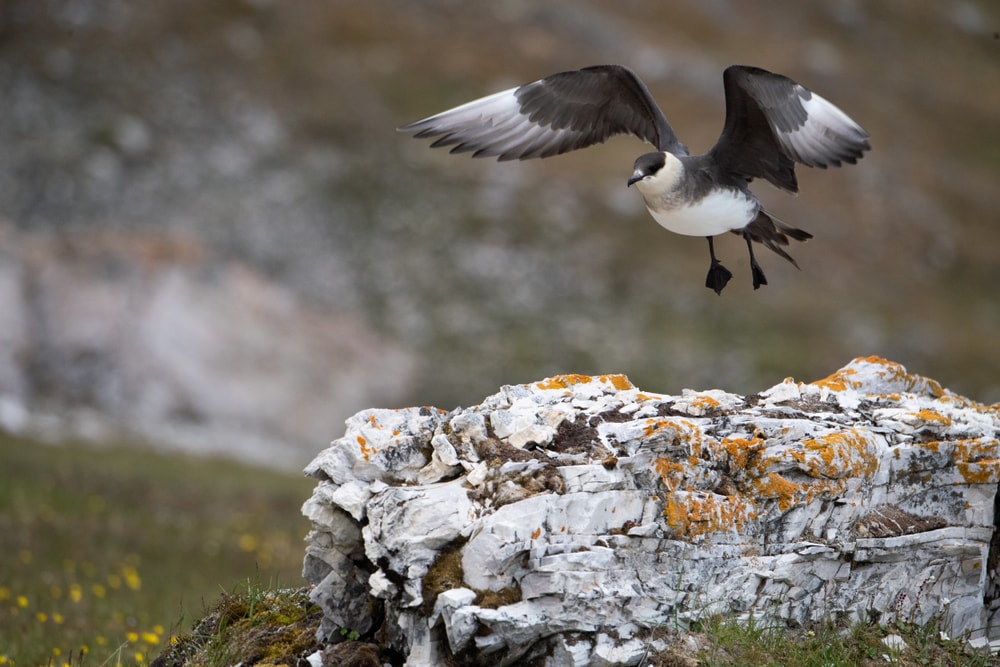
Skuas, also called Arctic Jaegers, are highly aggressive and predatory seabirds that live in the Arctic tundra of the Northern Hemisphere. They can also be found in the Southern Hemisphere where they migrate for the winter.
Other birds fall victim to skuas as they are kleptoparasitic, meaning they like to steal food out of the beaks and talons of birds carrying food back to their nests. They do so by attacking birds in flight until the food is dropped.
Arctic jaegers hardly ever visit land except for breeding and spend most of their life out at sea.
You may also like: Learn More About the 22 Amazing Hawk Species and Where to Spot Them: Complete with Images, Facts, and More!
Insects in the Tundra
18. Arctic Bumblebee (Bombus polaris)
Bumblebees are found all across the globe, even in the tundra. The Arctic Bumblebee, or Polar Bumblebee, inhabits the Arctic tundra of North America.
Arctic bumblebees are able to keep warm by shivering to generate heat. They also manage to brave the cold by having thick fur and use flowers to bask in the sunlight on warmer days.
As soon as spring comes in May, the queen bees begin buzzing around for nectar from freshly bloomed flowers. Worker bees don’t appear until a month later. Arctic bumblebees rely on various berries, flowers, and shrubs for food including bog blueberries, Arctic willows, Arctic poppies, and alpine bearberries.
19. Arctic Woollybear Moth (Gynaephora groenlandica)
A relative to the Woollybear caterpillar commonly spotted in the United States, the Arctic Woollybear Moth lives within the Arctic Circle in Canada and Greenland.
These types of bees love to snack on the Arctic Willow, but spend much of their lives in a frozen state during the long winter season. Much like some frogs that live in cold northern regions, they produce an antifreeze from sugars that allow them to freeze and thaw once temperatures rise.
Once they live out their life as a caterpillar, they wrap themselves in a cocoon and form into a gray moth by springtime. A large portion of their life is spent as a caterpillar because once they transform into a moth, they lack a mouth and their sole purpose is to reproduce before they die.
20. Arctic Mosquito (Aedes nigripes)
Even pesky mosquitoes can be found in the tundra. Although they may be irritating to humans, mosquitos play an important role in the food chain for tundra birds.
As the tundra warms up in the summer months, wetlands form and attract Arctic mosquitos. They feed on the abundant organic matter that forms in the bog-like conditions.
These insects are a great source of food for birds and other larger insects.
You may also like: How Long Do Squirrels Live? Longer Than You’d Think
How Climate Change is Affecting the Tundra
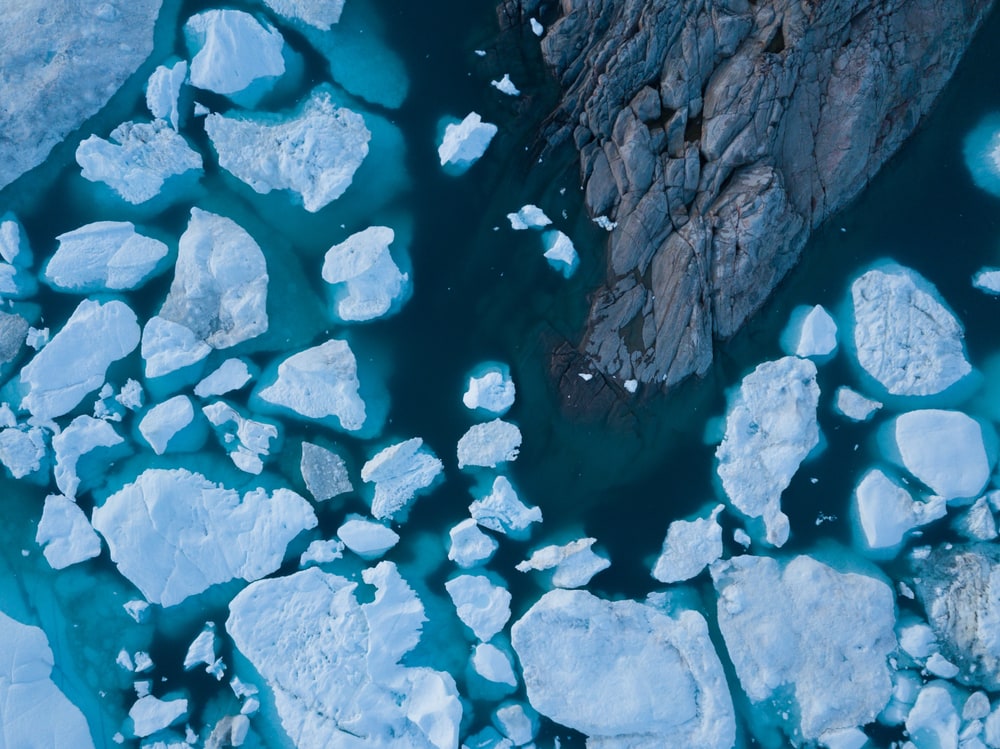
The habitats of many tundra species are negatively affected by climate change. Some species may struggle to find food sources due to increased competition. Sea ice has been melting rapidly at 13% per decade. Species that depend on sea ice as their habitat are significantly affected by this.
Another hefty issue of climate change is that rising temperatures melt the top layers of permafrost. Melting permafrost allows for plant matter to decompose and as a result, releases greenhouse gasses into the atmosphere. Beforehand, permafrost helped to trap greenhouse gasses since plant material could not decompose in the frozen soil.






